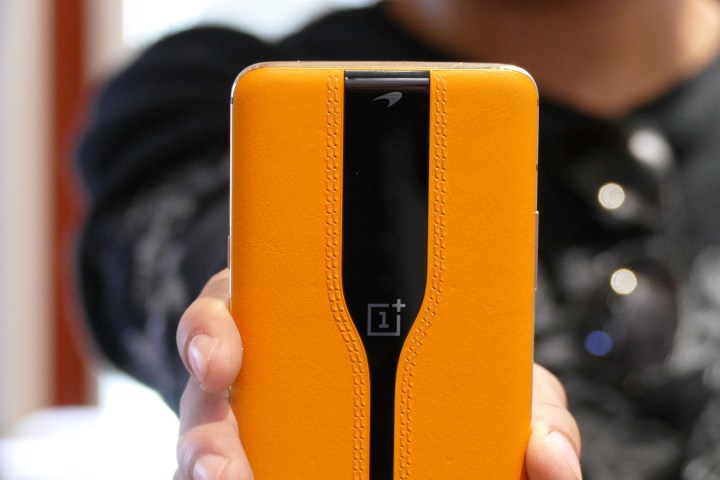
This story is part of our continuing coverage of CES 2020, including tech and gadgets from the showroom floor.
OnePlus publicly revealed a concept smartphone for the first time. It’s called the OnePlus Concept One, and at first glance, it doesn’t look all that much different from any other modern smartphone. Except look closer and you may spot the glass section on the back doesn’t seem to have any camera lenses; but they are there, they’re just very cleverly hidden away in the most high-tech fashion you can imagine.
Likely a response to the current trend for multiple camera lenses in large arrays, the OnePlus Concept One’s camera lenses are not only flush with the body, but are hidden under electrochromic glass, and only become visible when needed. If electrochromic glass is new to you, it’s a clever piece of technology. It shifts between transparent and opaque after an electrical current activates organic particles embedded in ultra-thin glass panels.
This has been seen on the glass used in the cabin of the Boeing 787 Dreamliner, and more pertinently here, some of the glass fitted to the McLaren 787S and 720S sports cars. McLaren co-developed the OnePlus Concept One with OnePlus, continuing the partnership that has already resulted in the OnePlus 6T McLaren Edition and the OnePlus 7T Pro McLaren Edition. On the concept phone it’s linked to the camera app, so when the camera is activated the glass reveals the camera lenses. It takes just 0.7 seconds to do so, which is about the same time as it takes the camera app to open.
- 1. Camera lenses hidden away
- 2. Camera lenses showing
In real life, this is a subtle effect when you watch it change, but the difference is more striking when the camera lenses are hidden away. The glass section just looks like it’s solid black in most light, giving it a sleek and minimalist style that’s rare in smartphones today. Apart from this, the electrochromic glass has another function — it can be activated when the camera is working, adding a special neutral density (ND) filter to your shots. This equalizes light without sacrificing color or sharpness and can be used to create some unusual effects in bright conditions.
- 2. OnePlus Concept device, shown off at CES2020.
The glass is incredibly thin, just 0.35mm in total, and is made up of multiple 0.1mm-thick panels. It’s far thinner and smaller than any other electrochromic glass applications on the market at the moment. McLaren has not only worked on the glass but also added its luxury touch to the rest of the phone. Take a look at the gold chassis paired with a wonderfully soft-touch semi-aniline leather, finished in McLaren’s iconic papaya orange color for proof. Underneath this, the phone is essentially the same as the already excellent OnePlus 7T Pro.
What’s OnePlus’s plan for the glass? We were told it’s exploring the potential of adding it to a smartphone we can actually buy, but is still working through the challenges involved in miniaturizing this technology for use in such a size, weight, and power-sensitive product. With OnePlus and McLaren on the project though, there’s every chance we’ll see this interesting tech more in the future. We’re expecting the next OnePlus phone, potentially the OnePlus 8, to launch around late May but there’s no evidence this will be a feature on it.
Follow our live blog for more CES news and announcements.







